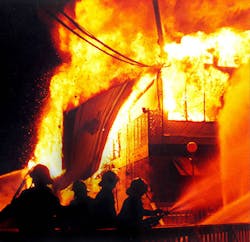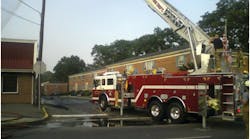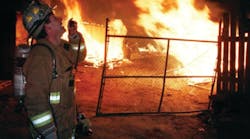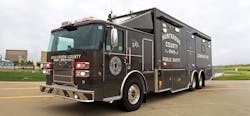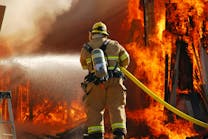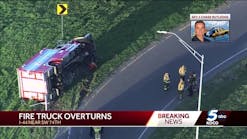Last month, I was in Boston to give a presentation, and was being shown around town by a local firefighter.
“That’s where the Bellflower Street Conflagration started in 1964,” he said as we were driving down Boston Street. The fire began on a rear porch on a 79-degree, windy day, and quickly spread to adjoining structures, all wood frame “triple deckers.”
The officer of first company on the scene, Ladder 20, immediately ordered a second alarm, and shortly, the 6th District Chief told the alarm office to strike the third and fourth alarms. A few minutes later, the incident commander radioed, “Give me all the help you can get.”
Ultimately, the fire damaged or destroyed 35 multi-family structures and while there were many injuries, there were no fatalities.
While a modern brick apartment building now stands where the fire began, the area around Bellflower and Boston Streets still have numerous, older three-story, “triple deckers,” and I wondered if, given the same circumstances, a fire of the same magnitude could happen again.
The Boston Fire Department has, of course, changed since then. Among the advances, it now uses large diameter hose for supply lines, has portable and pre-piped master stream devices on all engines, has tower ladders to provide high-caliber aerial master streams and its incident command and mutual aid system provides for a more orderly and rapid deployment of firefighting resources.
But, yes, there is still the potential for a rapidly developing fire to spread into conflagration proportions and if we look around hard enough, I’ll bet that most of our departments also have the potential of facing a fast-spreading fire as well.
The recent wildland fires in Colorado and other western states vividly illustrate the concept of fast-spreading fires in wildland/interface areas, but always keep in mind that urban areas too, are not immune to the effects of large, uncontrolled fires leaping from building to building.
Some examples of where this could happen are in buildings under construction, especially those without enclosed walls, large, highly flammable Class A outside storage areas containing straw, pallets, plastic pipes, shingles or lumber, and high density, closely packed structures such as old frame apartment buildings, garages, closely spaced barns such as found on county fair grounds and even a large group of RVs parked next to one another. Given the right conditions — temperature, wind and low humidity — you have the makings for a blaze that you may not be able to stop quickly.
The first element to consider is water — where is it and how much do you have. You might want to try a quick knock using the tank, but if things are moving quickly, it’s imperative that you establish a constant water supply or even multiple constant water supplies as soon as possible.
You might have to resign yourself to the fact that the original building (and maybe even the original exposures) is lost and your focus must be on stopping the fire spreading to the exposures farther away.
Ask yourself, what will happen if I do nothing for 10 minutes? Then, figure out in your mind where the fire will be at that point, and set up your lines accordingly. It is easier to move lines toward the fire once you get water, than to keep a retreat from turning into a rout, with no water flowing and the fire getting bigger and moving faster.
Once your first lines are in position and operating, establish a second line of defense behind them. Once a large fire starts to move, it becomes practically impossible to reposition the original rigs and hose lines to cover a safe and effective retreat.
You may have to forget interior firefighting tactics and the use of the “all-purpose” 1-3/4” hose lines until you get the fire’s spread stopped. You will need the reach and volume of 2-1/2” hose streams and large caliber master streams to cut into the heat.
Once the fire is knocked down, you can go in and mop up if the structures are safe, but you may have to leave the interior attacks on the back burner until the fire’s spread is controlled.
Officers should take a step or two away from the nozzle to see if the stream is actually reaching anything. Water arcing over the edge of a roof and falling into the back yard or a stream not washing the side of an exposure accomplishes nothing to mitigate the fire. Put the water where it will do the most good.
The use of single line attack monitors allows one person to safely control 500-GPM, and the monitor can be left in place flowing, if heat or flames are forcing firefighters to retreat.
A large fast-spreading fire is something that does not happen every day, and it is likely that most firefighters will encounter only one or two in their entire careers. The problem lies in the fact that because we encounter fast-spreading fires so infrequently, there is a tendency to not have properly planned for them. There is no excuse for that.
